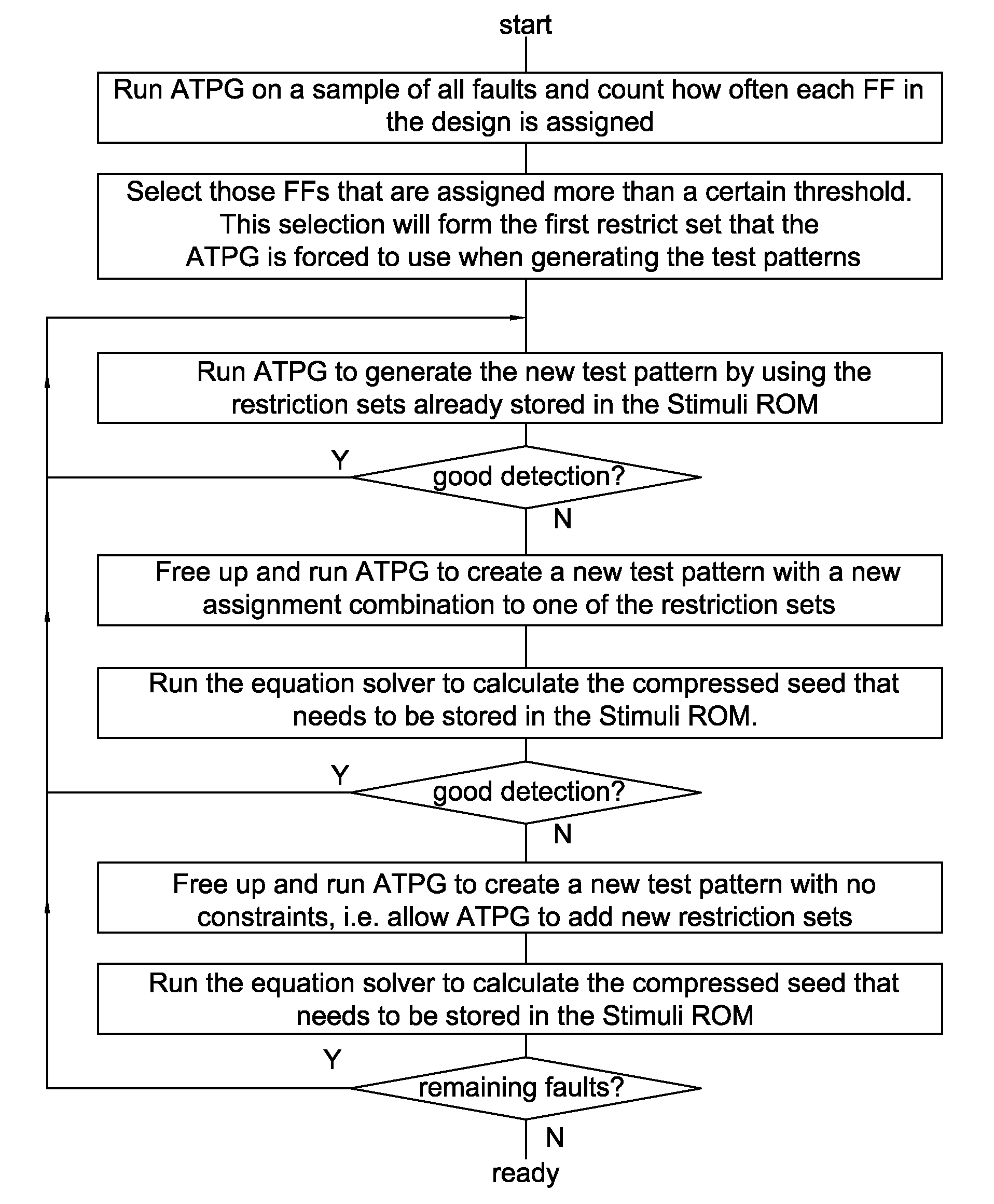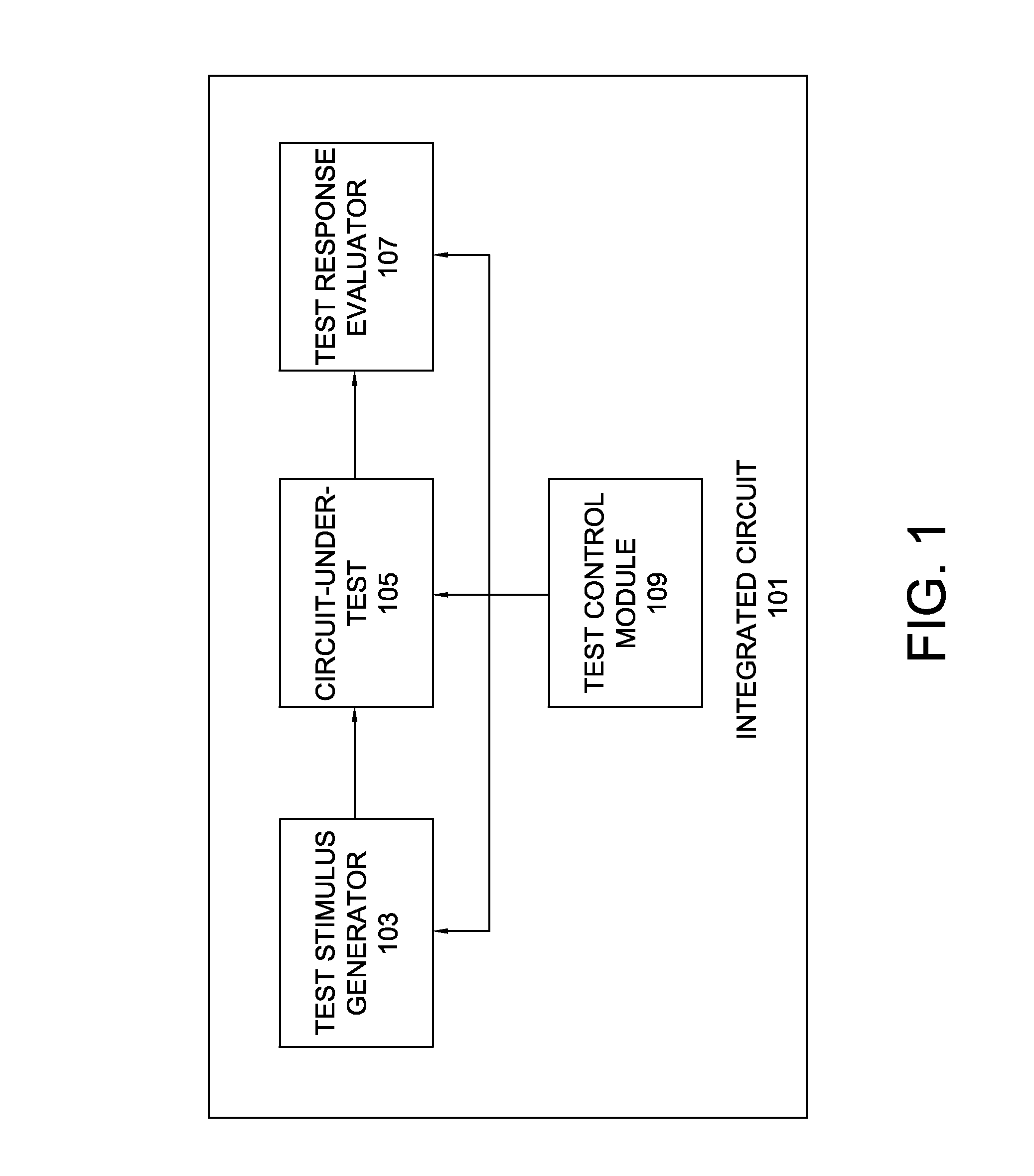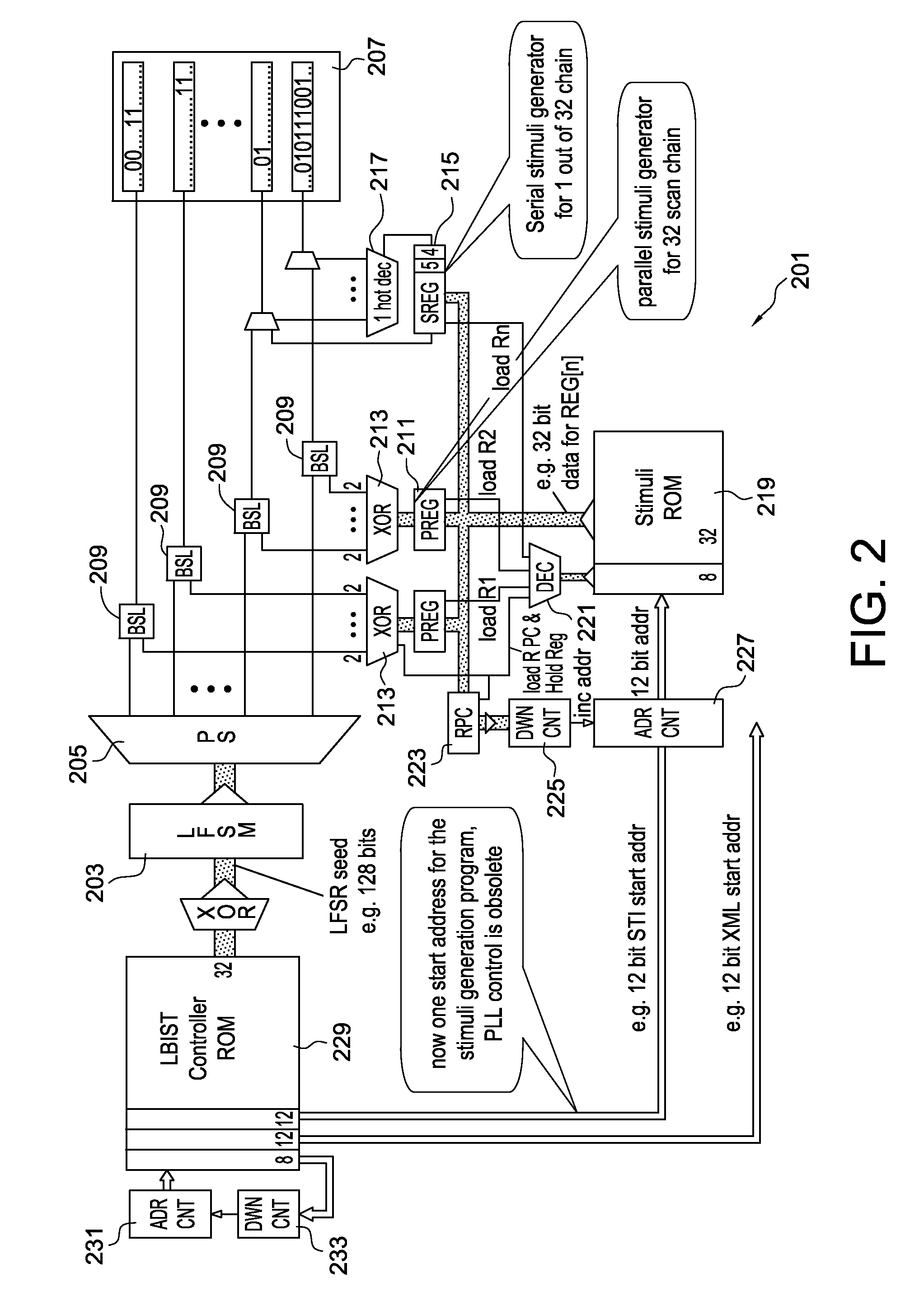Deterministic logic built-in self-test stimuli generation
a technology of deterministic logic and built-in self-testing, which is applied in the direction of measurement devices, instruments, computing, etc., can solve the problems of over-all size, saving area and test costs, and achieves high probability, efficient storage and provision, and high fault coverage
- Summary
- Abstract
- Description
- Claims
- Application Information
AI Technical Summary
Benefits of technology
Problems solved by technology
Method used
Image
Examples
Embodiment Construction
Built-in Self-Test System
[0016]FIG. 2 shows an example of an Embedded Deterministic Test (EDT) configuration 201 that may be employed with various implementations of the invention. As seen in this figure, the EDT configuration 201 includes a linear finite state machine (LFSM) 203 together with a phase shifter (PS) 205 connected to the linear finite state machine 203. According to various embodiments of the invention, stimuli generation logic is placed between the outputs of the phase shifter 205 and the inputs of internal scan chains 207. This stimuli generation logic may include bit-setting logic (BSL) devices 209, one or more parallel data registers (PREG) 211 with corresponding XOR decompressors 213, and one or more serial data registers (SREG) 215 with corresponding 1-hot decoders 217. Further, with some implementations of the invention, the stimuli generation logic also may include a stimuli memory circuit device 219 (which may be, e.g., a read-only memory (ROM) device), a regi...
PUM
 Login to View More
Login to View More Abstract
Description
Claims
Application Information
 Login to View More
Login to View More - R&D
- Intellectual Property
- Life Sciences
- Materials
- Tech Scout
- Unparalleled Data Quality
- Higher Quality Content
- 60% Fewer Hallucinations
Browse by: Latest US Patents, China's latest patents, Technical Efficacy Thesaurus, Application Domain, Technology Topic, Popular Technical Reports.
© 2025 PatSnap. All rights reserved.Legal|Privacy policy|Modern Slavery Act Transparency Statement|Sitemap|About US| Contact US: help@patsnap.com



